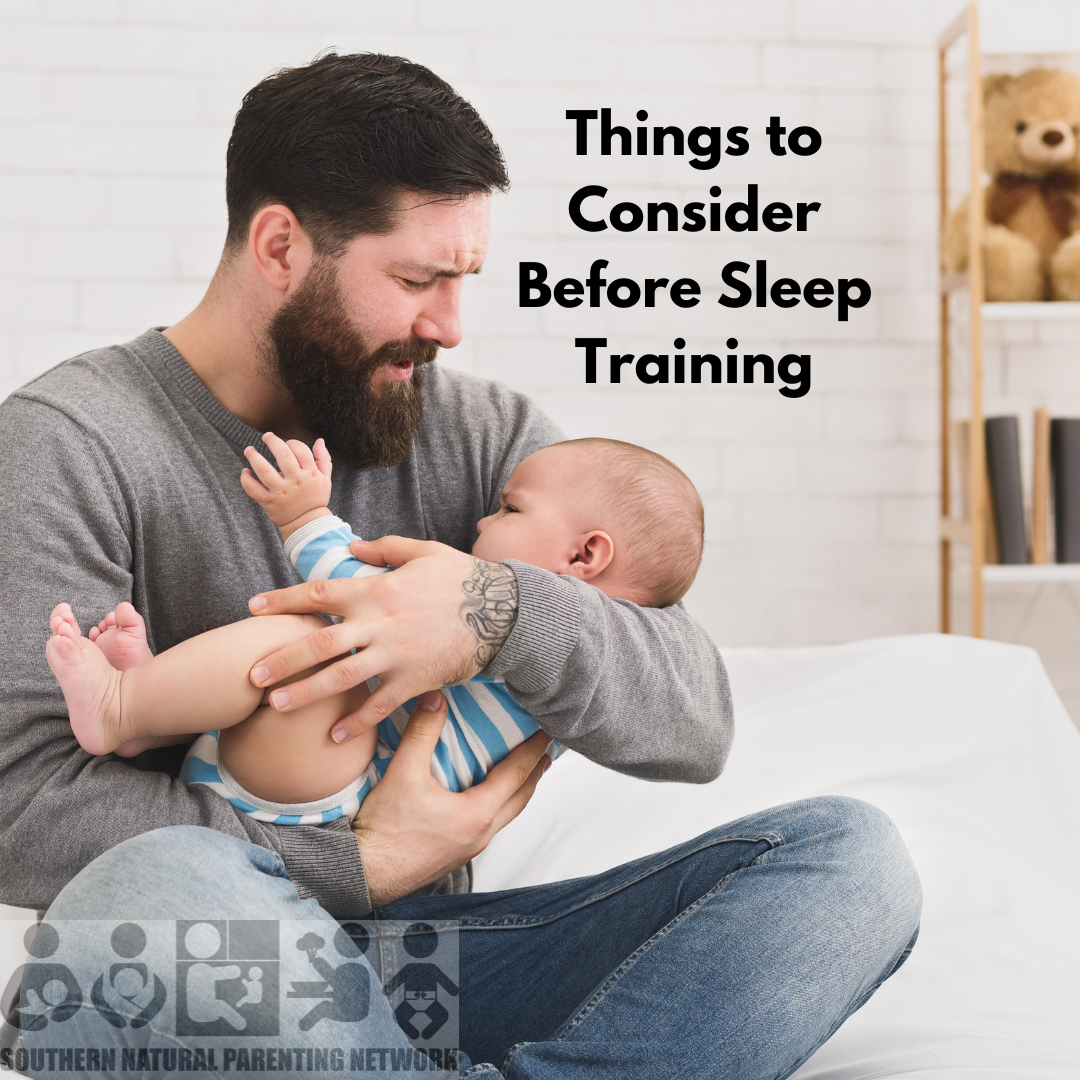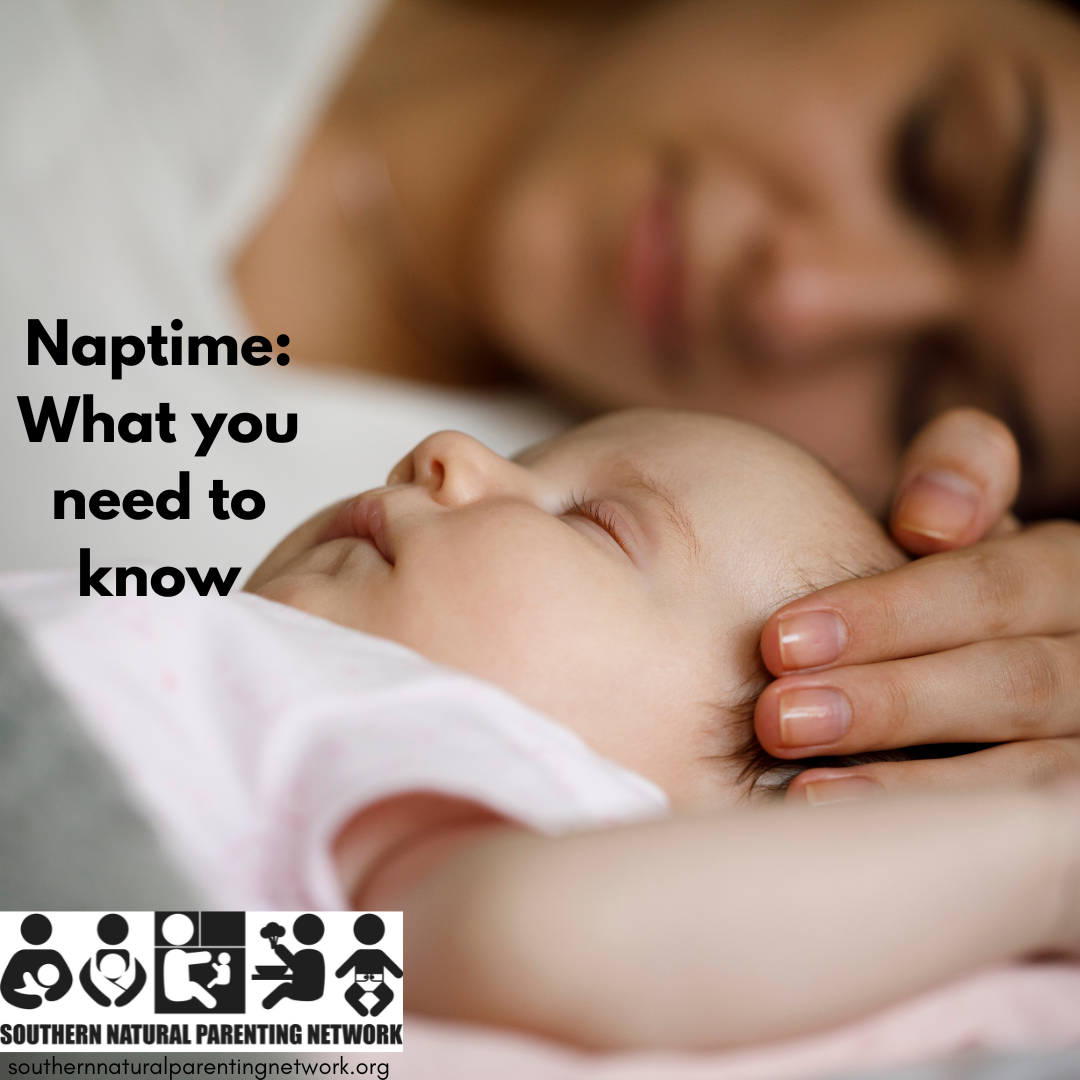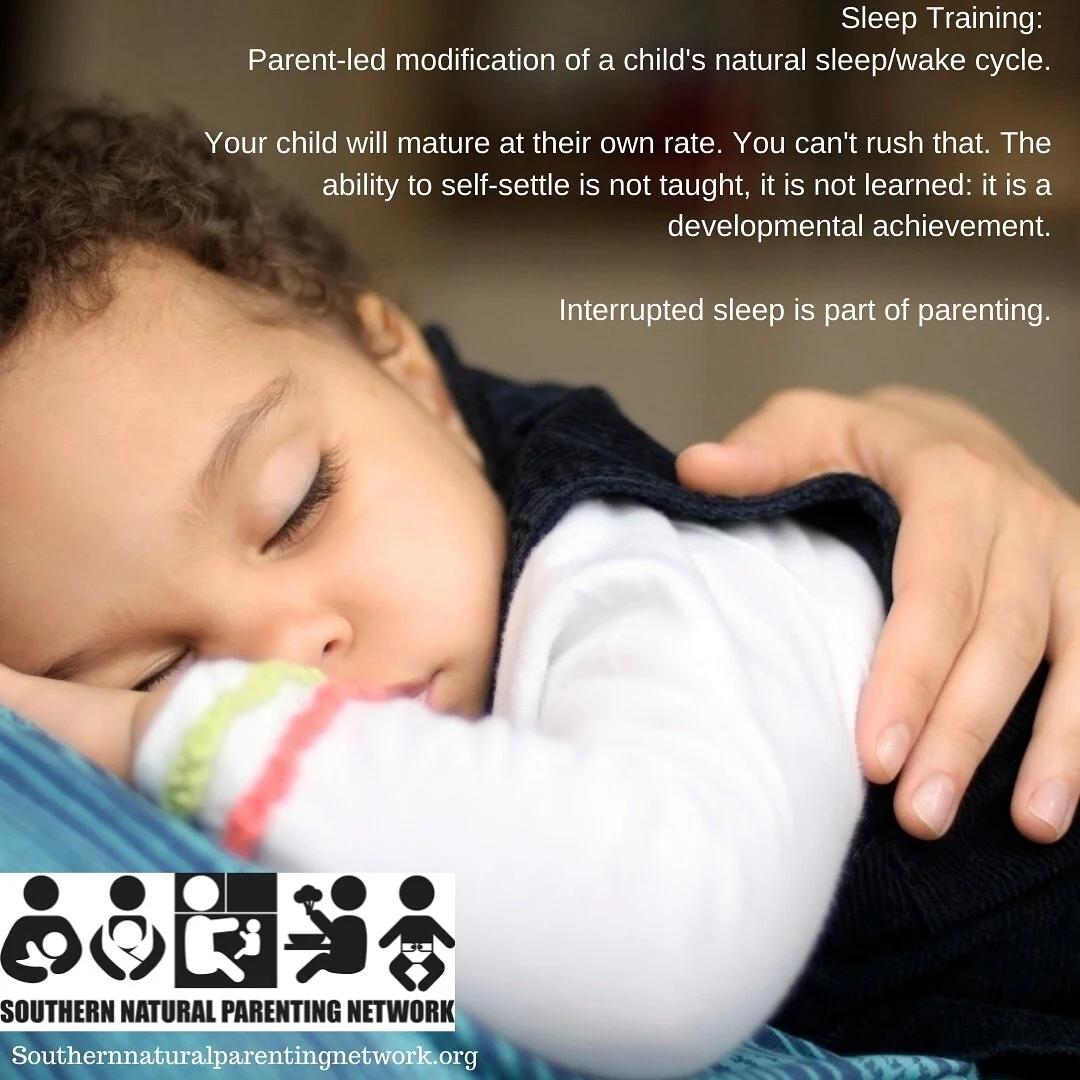See also The First Trimester for more information on infant sleep in the first three months
Cosleeping & Sleep Development
Co-sleeping is an umbrella term embracing breastsleeping, bed-sharing and room-sharing as a child’s typical sleep space.We believe it is normal and natural for breastfeeding children to sleep alongside their mother. Infants fed infant formula should sleep in the same room as their primary caregiver for at least the first 6-12 months. We believe there is no type of sleep training which is supportive of breastfeeding or compatible with gentle parenting.
• All babies should room-share with their mother for the first 6-12 months, as recommended to reduce SIDS risk. Where safe to do so, bed-sharing is the preferred choice for breastfed babies in non smoking households.
• Co-sleeper bassinets, side-carred cots and family beds are all supported.
• Babies should also be in the same room as their mother for day-time sleeps during the first 6-12 months. Co-napping, babywearing or contact napping are ways to achieve this.
• Parental support to sleep is considered normal in infancy and beyond. We do not support night weaning.
• Extinction methods of sleep training - Cry It Out, Controlled Crying and other techniques intended to sever the infant/mother bond during the night - are never supported in any circumstance in our community.
Sedating Babies With Food
Words like unethical, harmful, and concerning come to mind when considering the idea of parents dosing infants with sedatives to prolong sleep for their own benefit. Such actions prioritize adult convenience over the well-being of the child, raising serious moral and health concerns. As a parent, being advised by trusted individuals to use drugs on a baby for better sleep would invoke feelings of anger, fear, and confusion. The health and safety of my child is paramount, and the thought of compromising that for my own rest is deeply troubling.
Reflecting on past practices, such as introducing solids too early or adding ingredients to formula designed to override natural appetite cues, also raises significant alarm. These actions could be viewed as neglecting a baby’s developmental needs in favor of misguided attempts at convenience. If I were to receive such advice from someone I trusted, my response would be one of skepticism and concern. I would seek to understand the reasoning behind the advice, educate myself on best practices for infant nutrition and sleep, and ultimately prioritize what is healthiest for my child, even if it means standing firm against popular or outdated recommendations.
Myth-Busting: Sleep and Feeding
Parents quickly notice a pattern: babies often feed when they wake, and then drift off to sleep once they’ve fed. It seems logical, then, to assume that one causes the other. If a full tummy leads to sleep, surely more milk means longer sleep?
This is one of the most common myths about babies — and one of the most frustrating when reality doesn’t match expectation.
Feeding and Sleep: Rhythm, Not Cause
Feeding and sleep are deeply intertwined in a baby’s daily rhythm. Newborns spend much of their early weeks in a cycle of waking briefly, feeding, and then resting again. Their biology makes it look like feeding “switches on” sleep, but the truth is gentler and more complex.
Parents Need Sleep Too!
Before their first child is born, many people view parenthood as a carefree experience. Yet, the reality often brings challenges such as sleepless nights, exhaustion, and adjusting to a new routine. This can be even more daunting for mothers recovering from birth interventions. Sleep becomes a precious commodity for all new mothers. Here are some helpful tips for getting more sleep.
Why Toddlers Wake In The Night
In the first year of parenthood, the most common question is often: "Does your baby sleep through the night?" Studies show that up to one third of parents may not be honest about their baby's sleep habits due to fear of judgment. Research increasingly supports the idea that night waking is normal in the first few years of a child's life, contradicting the Western belief that night feedings decrease after the early weeks.
Things to Consider Before Sleep Training
Sleep training encompasses various methods aimed at helping infants and young children learn to self-settle during sleep disturbances. The ultimate goal of sleep training is to promote longer stretches of uninterrupted sleep for both children and parents. These methods typically fall into two main categories: those that discourage undesirable behavior through parental non-intervention (such as extinction techniques) and those that encourage positive sleep behaviors (like establishing bedtime routines).
Specific variations of extinction methods include unmodified extinction (commonly known as "cry it out"), graduated extinction (also called controlled crying), and extinction with parental presence (involving a parent staying in the room). Other techniques like positive routines, scheduled awakenings, and parent education also play a role in sleep training practices. By helping children develop the ability to resettle during night waking, sleep training seeks to create healthier sleep habits for the entire family.
Should babies sleep in daylight?
During pregnancy, the foetus relies on the maternal circadian rhythm to regulate sleep and wake times. But after birth, it takes around three months for the infant to begin developing their own body clock. This leaves babies with no recognition of day and night, no hormonal response to sunrise and sunset and an unlimited sleep/wake system. They simply eat and sleep, with brief periods of being awake in-between. As the infant begins to develop an independent circadian rhythm, their brain will react to changes in daylight. As the sun rises and our body clock senses an increase in light, our levels of cortisol rise naturally to stimulate our body to wake and go about daily activities. And as the day comes to an end and the sun goes down, decreasing daylight signals a time to increase melatonin release to calm our body and prepare for rest. This cycle continues throughout life to maintain the diurnal state in which humans live: active in daylight, resting in darkness.
Sleep Training and Mental Health
Those promoting sleep training - techniques designed to modify natural sleep behaviour in infants - often state the benefit for parents.
When babies cry - known as signaling - their mother’s body reacts with an increase in the hormone cortisol. Cortisol is sometimes referred to as the “stress” hormone. When the mother is startled awake by her baby crying, this surge drives her to quickly attend to them. The baby stops crying as their needs are met and the mother’s cortisol levels return to normal.
Naptime: What you need to know
While we often hear about how babies and toddlers sleep at night, daytime sleep is just as crucial for young children's growth and development. Daytime sleep is commonly known as "naps." However, there's surprisingly little research on what constitutes a nap, how many naps babies and toddlers need, and how long these naps should last. Much of what parents know about infant sleep comes from inherited assumptions rather than scientific evidence, as the field of infant sleep research is still relatively young.
The Misleading Myth of Sleep Regressions
Sleep Training businesses love the idea of Sleep Regressions: this linear view of infant sleep development equals opportunities to sell more books, book more overnight stays at sleep school or charge big bucks for consultancy services.
It is an industry feeding off the fears of parents whose babies appear to have “failed” previous training and regressed back into bad habits. Infant sleep is viewed as a goal and achievement by parents and society.
How Your Doctor Might View Night Waking
It would be natural to turn to your General Practitioner (GP) if you are struggling with your older baby or toddler’s sleep. In Australia, GPs provide primary health care and are partly or fully funded by Medicare.
However, how your GP will counsel you might not be the support you are seeking if you have chosen a gentle parenting approach.
The Royal Australian College of General Practiitioners’ (RACGP) website outlines in Behavioural Intervention: Infant Sleep Problems and Maternal Mood.
Human Babies Are Not Meant to Sleep Alone
Dr James McKenna calls them “Stone age babies in a space age world”. Despite great advancement in science and technology in modern history, our bodies – and those of our babies – remain unchanged.
Infants are designed to be kept safe by their mother, day and night, close to her body. Predators, the environment and other factors make the world an unsafe place for an unprotected infant – today as much as in the past, babies around the world sleep safest alongside their mother. Sharing a sleep surface (bed-sharing) or within arms-reach (co-sleeping) are still the natural way for mothers and babies to spend the night.
Back to Sleep Safely - Supporting Your Reluctant Baby
For several decades, health experts have recommended that parents place their babies on their backs when putting them to bed to reduce the risk of sudden infant death syndrome (SIDS). This simple guideline has had a significant impact in reducing SIDS deaths around the world since the early 1990s.
However, despite these recommendations, some babies may not feel comfortable sleeping on their backs. This leaves many parents wondering what to do if their little one won't settle in that position. Parents are understandably concerned that their baby's preference for sleeping on their tummy or side puts them at higher risk of SIDS, yet sleep deprivation can leave the entire family feeling stressed.
Is that dream feed messing up your baby’s body clock?
Back in 1957, research suggested 70% of babies began sleeping through the night at age three months. You have probably been told this by past generations of mothers, health professionals and others who have passed this along as fact for more than sixty years.
But here is what they leave out:
Minimising risks around infant sleep: Safer sleep spaces
Nothing in life is risk-free. Every day we make choices which come with an element of risk. You have done some of these today. We get in cars and drive them. We fly around the world in planes. We eat popcorn. We walk on the beach barefoot. We eat deep fried foods.
When it comes to our babies, the amount of information about sleep is overwhelming. When it comes to safe sleep practices, it can be terrifying. But it shouldn’t be.
Putting The Puzzle Together Again: A History of NOT Sleep Training
As parents, we do many things for our babies until they are able to do them for themselves. We feed them until they can gather their own food. We carry them until they can walk distances independently. We keep them safe, we protect them. Yet when it comes to sleep, modern culture considers helping infants fall asleep is optional. Infancy is classified as the first 3 years of life, a period of high-dependence.




















